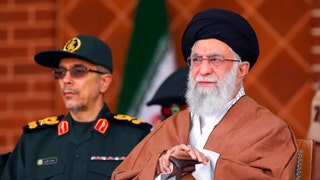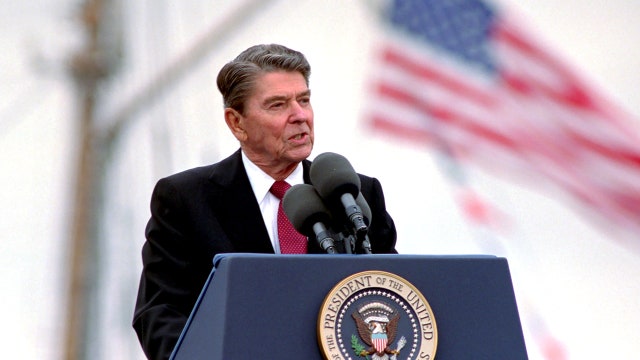The life and near death of Ronald Reagan
How John Hinckley's assassination attempt changed Ronald Reagan's purpose and his presidency
March 30, 1981 began as a typical day for Ronald Wilson Reagan, who was just settling into the routine of being president of the United States. He had been on the job for merely two months.
The day had included morning briefings followed by the usual meetings, messages, and perfunctory announcements. That day, he had nominated an assistant secretary here and there—one to the Department of Agriculture, two to the Department of Interior, two to the Department of Health and Human Services. Ho-hum.
Also on the president’s schedule was a speech, listed unremarkably as “Remarks at the National Conference of the Building and Construction Trades Department, AFL-CIO.”
It didn’t sound like a place to expect any fireworks. It was to be a short set of remarks in the ballroom of the Washington Hilton, a hop, skip, and jump from the White House, a few minutes away via presidential limousine.
Ronald Reagan would see his survival as nothing short of divine intervention. He told this to his children Maureen and Michael, and also shared it with sources as diverse as Billy Graham, Mother Teresa, Michael Deaver, Cardinal Terence Cooke, and the Rev. Louis Evans, his pastor at the National Presbyterian Church.
But what began as routine became anything but. What would soon happen would forever, in a flash, change the trajectory of Ronald Reagan’s presidency, life, and rendezvous with destiny.
The speech went well. This conservative Republican president had been a lifetime union guy, and these Reagan Democrats appreciated that. At 2:25, he made his exit, leaving the hotel through a side door. Surrounded by staff, Secret Service, and curious onlookers, Reagan smiled as he strolled to his car. One unsmiling face in the crowd was an individual named John Hinckley.
Hinckley came carrying no grandiose ideological or political vision. He was, however, carrying a gun. He was also harboring a heavy heart for a young actress named Jodie Foster, whom he had been stalking. The addled young man had a singular personal goal: to gain the attention of Foster. He would succeed.
A nearby reporter yapped out a question as Reagan headed toward the awaiting car door. The new president raised his left arm. Suddenly he heard what sounded like firecrackers, followed by chaos—people screaming, scurrying, falling. In an instant, one of them, Press Secretary James Brady, was lying face down on the pavement in his suit, bleeding from his skull.
Instinctively, Secret Service agent Tim McCarthy turned himself into a human shield, placing his body between the president and shooter. He took a bullet for Ronald Reagan.
Another agent, Jerry Parr, thrust Reagan into the backseat of the limo, landing atop the 70-year-old president’s frame as he barked directions to the driver to escape. “Jerry, get off,” pleaded Reagan, “I think you’ve broken one of my ribs.” The president would later recall that the feeling in his upper back was “unbelievably painful.”
Reagan did not yet know it, but he had been shot. Parr soon figured as much. He noticed frothy blood bubbles coming from the president’s lips. He ordered the driver to head straight to George Washington University Hospital.
To Reagan’s great fortune, the best and brightest happened to be on hand for a hospital-wide meeting of department heads. The chief thoracic surgeon and chief brain surgeon were both present. Reagan would joke to the superb surgical team: “I hope you’re Republicans.”
Though it was typical of Reagan to react with humor and grace, he was scared. “My fear was growing because no matter how hard I tried to breathe,” he later wrote in his diary, “it seemed I was getting less & less air.”
Reagan also reacted with prayer. “I focused on that tiled ceiling and prayed,” he later said. “But I realized I couldn’t ask for God’s help while at the same time I felt hatred for the mixed up young man who had shot me. Isn’t that the meaning of the lost sheep? We are all God’s children and therefore equally beloved by him. I began to pray for his soul and that he would find his way back into the fold.”
Reagan needed all the prayer he could get. Spread out on the table, the surgeons discerned the frightening extent of Hinckley’s action.
The “mixed up young man” had little confusion about his choice of weaponry. He had employed .22 Devastator bullets, manufactured to explode on impact.
One bullet stopped mere centimeters from Reagan’s heart. If the wound was not stitched soon, and if Reagan was not given a lot of blood, he would bleed to death.
They stitched him up, and the 40th president got the blood he needed.
Ronald Reagan would see his survival as nothing short of divine intervention. He told this to his children Maureen and Michael, and also shared it with sources as diverse as Billy Graham, Mother Teresa, Michael Deaver, Cardinal Terence Cooke, and the Rev. Louis Evans, his pastor at the National Presbyterian Church.
When he got back to 1600 Pennsylvania Avenue, Reagan recorded that sentiment in his diary. “Whatever happens now I owe my life to God and will try to serve him in every way I can,” he wrote.
For Reagan, that service had Cold War contours. He was convinced that the Soviet Union was an evil entity that needed to be consigned to the ash-heap of history. It was a principal reason why he had sought the White House. Now, he made victory in the Cold War his overriding priority.
Incidentally, a year later he would share that sense with someone else who felt the same call, Pope John Paul II—who, amazingly, also barely survived an assassination attempt near the same time, in May 1981. The two would meet alone for 50 minutes in the Vatican Library on June 7, 1982, where they shared their mutual conviction that their lives had been spared for a special purpose—to defeat atheistic Soviet communism.
And that was precisely what they went on to do.
That was the historical-spiritual force that John Hinckley’s revolver unwittingly let loose on March 30, 1981.
It was one of numerous ways that Ronald Reagan’s presidency—a consequential one of numerous accomplishments, foreign and domestic—would impact America and the world.
It was a bullet that changed not only Ronald Reagan’s life but his history and the world’s history.









































